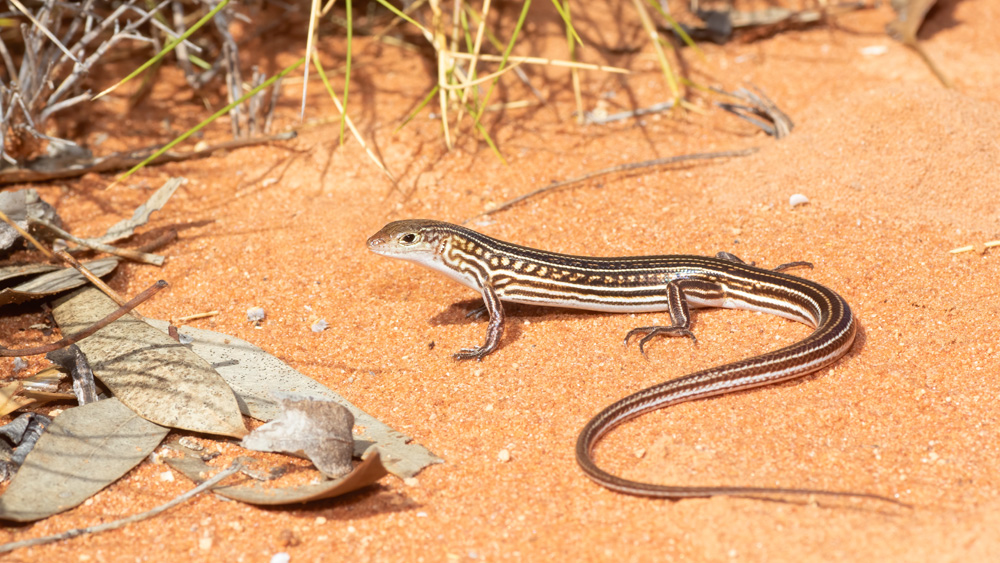Located on Malgana Country on a beautiful nature conservation reserve, Hamelin Station Stay is a peaceful place to immerse yourself in the stunning landscape and learn about national conservation organisation Bush Heritage Australia’s work across Hamelin Station Reserve.
Burraluguda (Hamelin) is a photographer’s dream, rich in wildlife, cultural landscape, stunning wildflowers, iconic red soil and stone, a beautiful lake, with magnificent sunrises, sunsets and starry night skies.
This wonderful destination is the ideal base for exploring the many natural attractions of the area, including the Hamelin Pool stromatolites, Wulybidi (Monkey Mia), Dhdhudugada (Francois Peron National Park), Wirrawana(Dirk Hartog Island), and Steep Point, the most westerly point in Australia. Enjoy the relaxed and friendly atmosphere whilst learning about how Bush Heritage is protecting this special reserve.
Hamelin offers guests two accommodation options and is open from April to October each year.
A range of excellent unpowered sites are set amid the beautiful semi-arid landscape, with natural bush corridors surrounding the sites. Hamelin can cater for the largest caravans to those who only require a site to pitch a tent. Groups are also warmly welcomed. Located only 1km off the main road, the Station Stay is easily accessible for all vehicles.
Or, stay in the restored, rustic Shearers’ Quarters, with a range of different room options to suit your needs. All linen is provided.
Communal modern bathroom facilities, with toilets and hot showers, are available to all guests, as well as a fully equipped powered camp kitchen, dining and barbecue area for a relaxing meal after a big day exploring. There is limited rainwater available.
See what you can do at Hamelin Station Reserve – you'll be pleasantly surprised!

Covering 202,644 hectares, Burraluguda (Hamelin) adds a 10% conservation buffer to the Shark Bay World Heritage Area. It extends a corridor of nature reserves from Gathaagudu (Shark Bay) via Toolonga Nature Reserve, through crown land to Bush Heritage managed Eurardy Reserve on Nanda Country and then Kalbarri National Park – a span of over 200km.
The Shark Bay area supports some 240 bird species (about 35% of Australia’s total), as well as many plants, reptiles and mammals. Key species subject to conservation efforts at Hamelin include the Hamelin Skink(endemic to Hamelin Station and a neighbouring property), Western Spiny-tailed Skink, Western Grasswren and Malleefowl.
Hamelin is in a transitional zone for flora and supports species characteristic of both the South West (Yalgoo) and the Eremaean (Carnarvon) bioregions.
Most vegetation communities in the Carnarvon bioregion on the property are Acacia dominated shrublands on sandplains, which are poorly represented in the National Reserve System. Areas close to the Hamelin Pool shore support coastal salt marsh (listed as Vulnerable). The south of the property features eucalypt woodlands with a spinifex understorey.
Plants of special conservation significance include Beard’s Mallee (Eucalyptus beardiana), Ashby’s Banksia (Banksia ashbyi).
Hamelin Pool is one of only two locations Worldwide where active marine occur in diversity and abundance. In the Malgana language, the stromatolites are referred to as Burraluguda which is loosely the name for Hamelin area.
Stromatolites are created by colonies of microbes called cyanobacteria (blue green algae) which trap and bind sand and sediment grains. They’re found in fossil records dating back to 3.5 billion years, which are the earliest fossil evidence of life.
Hamelin Station Reserve protects 30kms of Hamelin Pool shoreline from the impacts of people, stock and soil degradation.
Hamelin serves as research base, providing support for Australian and international scientists, students and volunteers. Research areas have included the Hamelin Pool stromatolites, western grasswrens and sandalwood.
Bush Heritage acknowledges Gathaagudu (Shark Bay) and Burraluguda (Hamelin) as the traditional lands and waters of Shark Bay’s Aboriginal people, who have lived in this region for over 30,000 years. Together we work together to protect and care for Country by supporting cultural workshops, ranger training, family gatherings, cultural activities and social visits. There are around 130 registered Aboriginal heritage sites within the Shark Bay area including, including rock shelters, quarries and burial sites.

Bush Heritage is an independent not-for-profit organisation that buys and manages land for conservation and works in partnerships with Aboriginal people and the agricultural sector, to protect our irreplaceable landscapes and our magnificent native species forever.
In 1991, Bob Brown purchased two rainforest blocks adjacent to the Tasmanian Wilderness World Heritage Area using money from his Goldman Environmental Prize, and loans from friends and banks. The fundraising campaign to recover this debt was the birth of Bush Heritage.
As the organisation grew, it became obvious that just buying land wasn't enough to safeguard our precious but threatened natural heritage. Much land that's vital to regional conservation is in private hands.
So in 2006, Bush Heritage started building partnerships with landholders – pastoralists, farmers and Aboriginal landowners – to help them manage their land for conservation.
Since 1991, the organisation has grown to help protect over 11.3 million hectares across Australia on reserve and partnership properties.
Through the generous donations of its supporters across Australia and the world, Bush Heritage is able to fund this critical work, with a 2030 vision of doubling and deepening impact.
Visit www.bushheritage.org.au to learn more



